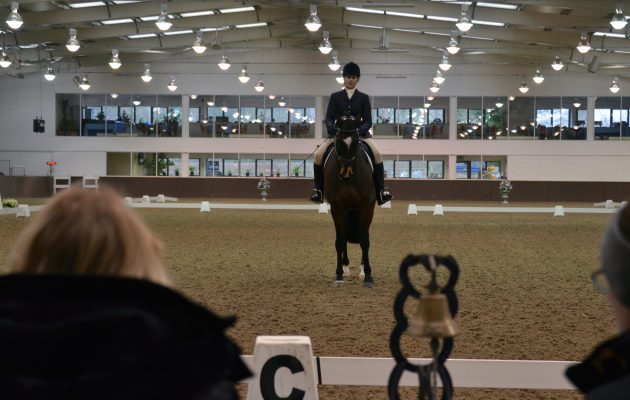Welcome to your final e-Training lesson with Keith Robertson. This week Keith explains how to ride super serpentines with a view to improving your prelim test riding — and we focus on prelim 18. Enjoy your schooling and remember to let us know how you got on!
Session 1: serpentines
In prelim 18 you’re required to ride serpentines for the first time, so it’s essential that you practise these at home this week.
Your horse should show a consistent bend – not big variations or massive turns – and look like no change is occurring through his body. Serpentines are a great way to display a horse with a good rhythm and an easy change of bend from left to right, and vice versa, so mastering these will really put you at an advantage.
To try at home…
View the tops of your serpentines as half circles – don’t ride them as squared off edges – remain smooth and consistent.
Remember that when crossing the centre line your horse should be completely straight for a few strides.
First, you need to know your arena and think about where you should be in the arena within your turn. Put markers down to help you if need be. Start on the left rein and ride a three-loop serpentine, ensuring that all of your loops are the same size.
If you are struggling, break the serpentine down and focus on the flow and regularity of the trot.
All horses will have a stronger side, so be sure to practise these serpentines starting on both reins at home – some horses will have an easier change from one direction to the other, but you want to orchestrate them to be as equal as possible. Return to focus on the straightness of your horse now you’ve bent on both reins.
Let others know if you found this effective in our Facebook group.

Session 2: balancing a big horse
It’s important that your horse is balanced when riding a serpentine, and this can be trickier if you have a big horse.
A big horse and will take longer to mature than a smaller one. Try to help him develop strength and balance in canter by riding smaller circles, at first just down to 18m, and then as he finds that easier reduce them to 15m.
As long as he remains upright (i.e. not leaning over) with a genuine bend, he will bring his inside hindleg further underneath himself, which will improve both his balance and the weight carrying capacity of his hindquarters.
Session 3: practise the whole test
It’s now time to practise riding the test as a whole, but first watch this week’s test riding video with Isobel Wessels:
 Watch the video
Watch the videoIf you can not view the video player above, please click here




